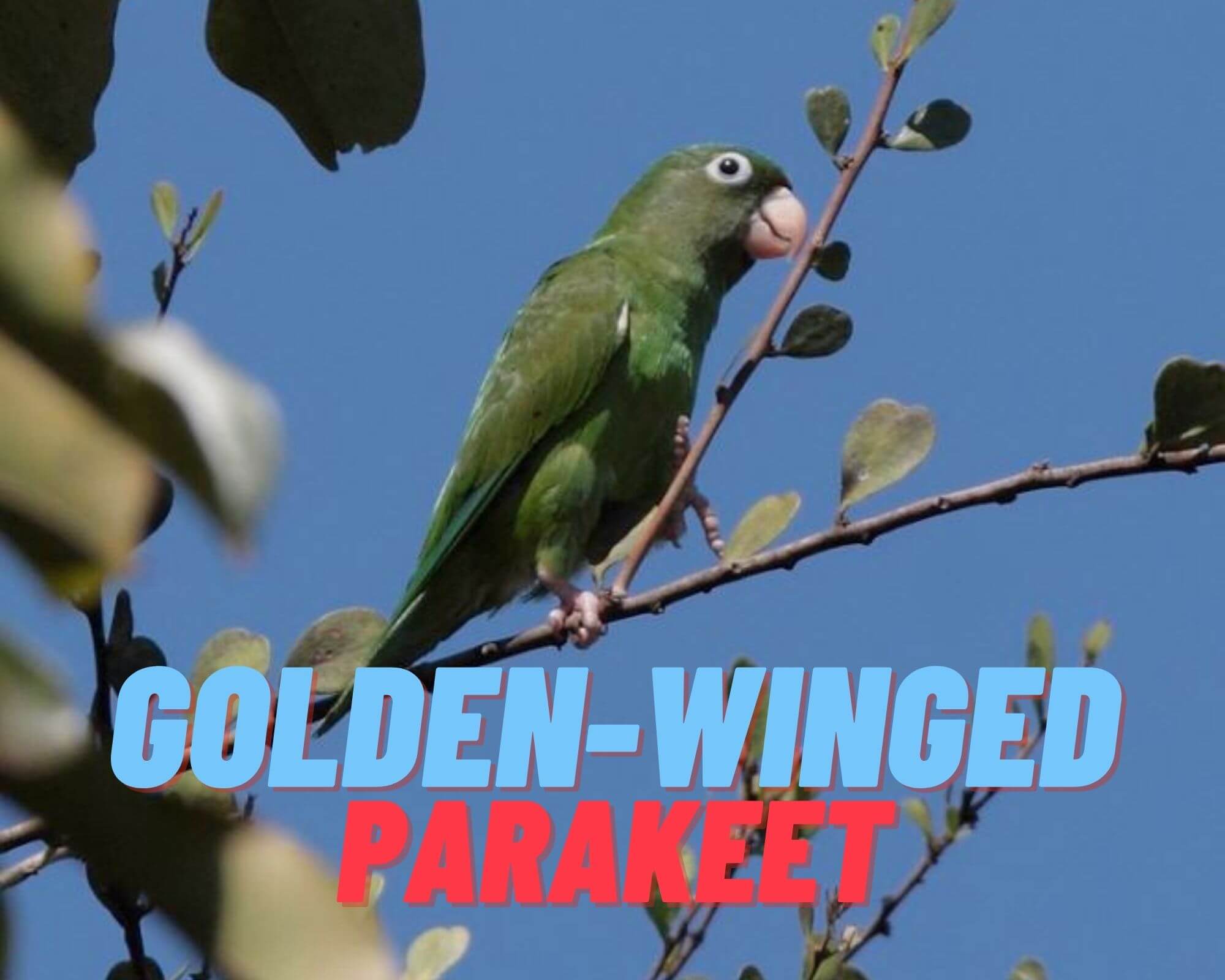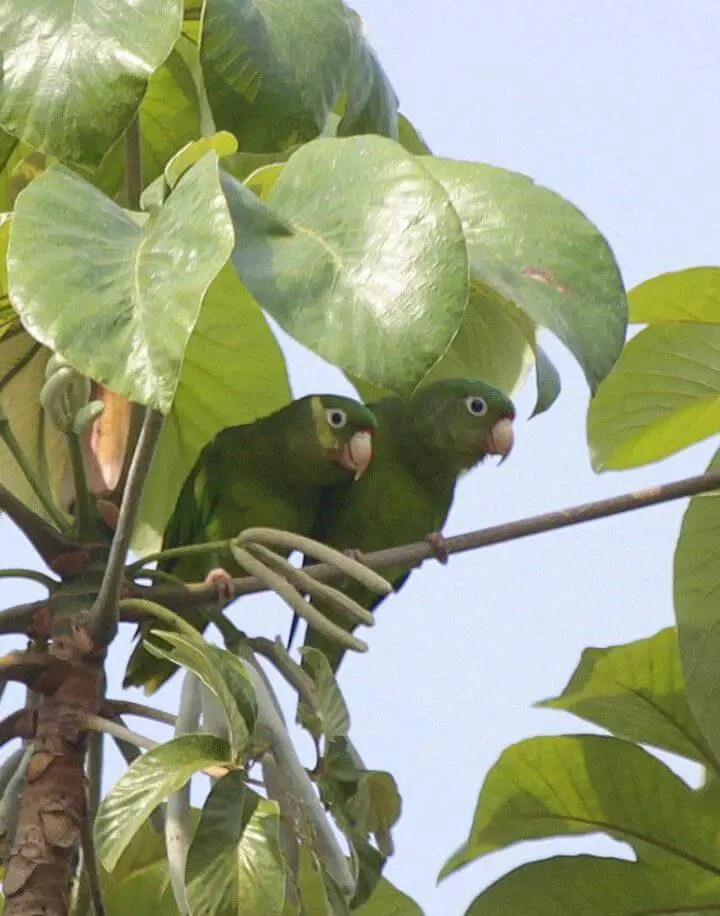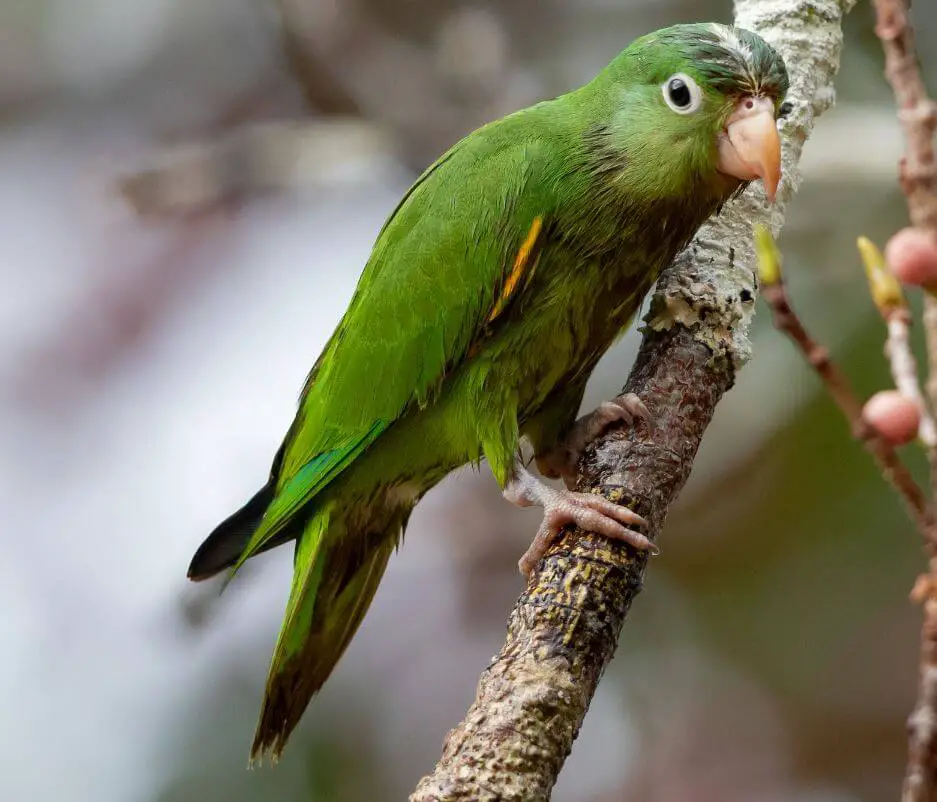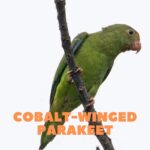 The Golden-winged Parakeet is the northeasternmost representative of the genus Brotogeris and is sometimes considered to form a superspecies with the Cobalt-winged Parakeet (Brotogeris cyanoptera) of upper Amazonia, and the Orange-chinned Parakeet (Brotogeris jugularis) of Middle America and northwest South America.
The Golden-winged Parakeet is the northeasternmost representative of the genus Brotogeris and is sometimes considered to form a superspecies with the Cobalt-winged Parakeet (Brotogeris cyanoptera) of upper Amazonia, and the Orange-chinned Parakeet (Brotogeris jugularis) of Middle America and northwest South America.Identification
Golden-winged Parakeet 16 cm; 47–80 g. Close to B. cyanoptera but primary-coverts bright orange, chin spot orange-brown, blue in flight-feathers greatly reduced; has a brownish frontal band. Immatures lack orange in the wing.

Golden-winged Parakeet
Race tuipara has a frontal band and chin spot orange, yellow edging to outer tail-feathers; Chrysostom larger, with yellowish-orange forehead and yellow primary-coverts; solimoensis like cyanoptera but the frontal band and chin paler; tensions like tuipara but with no frontal band.
Systematics History
Editor’s Note: This article requires further editing work to merge existing content into the appropriate Subspecies sections. Please bear with us while this update takes place.
DNA study indicates that present species and B. cyanoptera are sister species, the two, in turn, being sister to the pair B. pyrrhoptera and B. jugularis.
A golden winged parakeet (Brotogeris chrysoptera chrysoptera) at Loro Parque Fundacion
SOURCE: Video Ark
Subspecies
Brotogeris chrysoptera chrysoptera Scientific name definitions
Distribution
Brotogeris chrysoptera tenuifrons Scientific name definitions
Distribution
Brotogeris chrysoptera solimoensis Scientific name definitions
Distribution
Brotogeris chrysoptera tuipara Scientific name definitions
Distribution
Brotogeris chrysoptera chrysosema Scientific name definitions
Distribution
Distribution
Editor’s Note: Additional distribution information for this taxon can be found in the ‘Subspecies’ article above. In the future, we will develop a range-wide distribution article.

Golden-winged Parakeet
Habitat
Cloud forest to 1200 m N of Orinoco, elsewhere lowland primary rain forest, second-growth along waterways, savanna, coastal sand-ridge woodland, edges, and centers of towns in large trees.
Movement
Some irregular wandering was suggested by records near Paramaribo, Surinam, in Jul–Aug and Oct 1964 in contrast to other years.
Diet and Foraging
Largely concentrates on flowers, taking nectar of e.g. Noranthea, Inga later folia, Erythrina amazonica, Virola surinamensis, Tabebuia serratifolia, Pithecellobium pedicellate, Bertholletia excelsa, Allantonia lineate, and possibly Micropholis melinoneana;
also the green seed of Cecropia miparia, the seed of Alibutia edulis and Bombacaceae, seed and pulp of Ficus and Sterculia excelsa, the fruit of the palm Astrocaryum, berries of Trema micrantha, and surface algae, insects, and snails in pools.
Sounds and Vocal Behavior
Common calls include a high-pitched “klee”, shrill “chree” or bisyllabic “chree-chree”, given both in flight and perched. Also a fast chattering series “cra-cra-cra-cra-cra”. Noisy in flight, individuals of a group often call simultaneously. Large groups can make a loud cacophonous noise.
#BIRD #Golden-winged Parakeet #petbirds
SOURCE: shihan Birds World
Breeding
Occupied nest-holes in Feb, Apr, Sept and Nov in Surinam; Apr, Jul–Aug, and Nov in French Guiana, where numerous flying young observed in May; Sept-Oct and possibly Apr–May in N Mato Grosso. Uses tree-holes and arboreal termitaria. Eggs 3–4. No further information.
Conservation Status
Not globally threatened. CITES II. Locally common to abundant, even in cities, in all range states, and is relatively little traded. There have been some local declines in E of range from habitat loss.




















